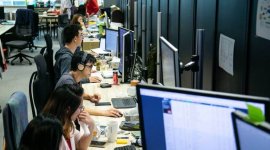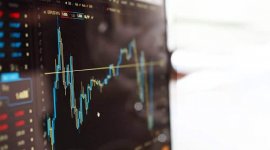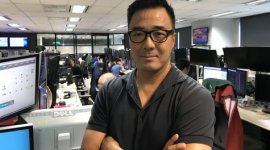Grasshopper: Trading that Defies Market Uncertainty
Jan 09, 2024

Who Are We?
Grasshopper is a leading trading firm, based in Singapore, providing liquidity in global markets. We are innovative, technology-driven, and heavily invested in developing the competencies of our people.
We were founded in 2006 and have been consistently and relentlessly driving towards growth by building a compelling community of problem-solvers.
How Do We Trade?
Grasshopper uses low-latency technology and sophisticated trading models to analyze large volumes of real-time financial data and place thousands of orders within fractions of a second. While it is true that many professional traders increasingly rely on technology and quantitative models these days, Grasshopper is on the extreme end of the spectrum defined by three characteristics:
- Low Latency: We analyze and react to new information in just hundreds of nanoseconds, typically, and not more than just a few microseconds. This is 100-1000x faster than the typical automated quantitative trader.
- High Turnover: We trade as much as 10 times more volume than the typical automated quantitative trader of similar capitalization.
- Negligible Market Correlation: We are exposed to market direction for only a few seconds, typically, and rarely more than a few minutes. We are always fully hedged overnight.
At Grasshopper, we have consistently generated triple-digit returns (you read that right) on our capital every year for the last 5 years, and have never had a losing month in our entire 17 years of history. Many people from outside the industry are surprised to hear that, and some ask about the secrets behind our trading. Though we do indeed have many proprietary trade secrets, the key drivers of our incredible performance are skills and statistics.
How Do We Keep Winning?
We are extremely skilled in our craft. We seek to recruit the best and brightest traders, quants and technologists, to build cutting-edge technology to analyze terabytes of financial data in realtime, and to trade faster than everybody else. Our risks are managed very conservatively with automated and discretionary overlays. Our substantial investment in people, technology and risk management gives us a trading advantage, but it is a fair advantage, analogous to the edge that professional poker players have over punters.
However, much like a game of poker, trading is very much subject to the vagaries of chance. This is where the statistical advantage of trading very frequently shines. Because we are able to make tens of thousands of trades a day, we are able to transform a small and random advantage into a large and nearly deterministic advantage.
To illustrate with an example, suppose we play one turn of a game that has a 55% chance of winning $1 and a 45% chance of losing $1. The expected payout for a game is $0.10 while the standard deviation is $0.995. However, if one plays 1000 turns, the expected payout is $100 while the standard deviation is sqrt(1000) x 0.995 = $31.5. The probability of losing money after 1000 turns is less than 1 in a thousand!
Our Outsized Role in Financial Markets
Due to the outsized impact of Grasshopper and other low-latency market-makers, we have been the subject of close scrutiny by market regulators, exchanges, researchers and other market participants. By and large, the research has robustly shown that our activity greatly benefits the market by improving price discovery and narrowing the bid/ask spread, which reduces the trading costs for other investors and improves market liquidity. Also, contrary to early fears that the liquidity that we provide is illusionary and will disappear under stressed market conditions, it has turned out that low-latency market-makers are actually the most robust providers of liquidity, as demonstrated when global markets panicked during COVID outbreak of March 2020.
According to Charles Schwab, the founder of the largest publicly listed US brokerage firm, “They (Low-latency market-makers) provide an essential service to the marketplace (…) by providing both buying and selling (..). You could see the results when markets took a deep dive in March of last year”
With great power comes great responsibility. Globally, market regulators have studied our activities and have imposed new regulations to safeguard financial markets by improving transparency, compliance, risk management and operational capabilities. Grasshopper welcomes such regulations and is an active collaborative partner with the exchanges that we trade on, frequently engaging in constructive dialogue to make markets better. Grasshopper was amongst the very first firms to be successfully registered under the stringent Japan High Speed Trader Registration in 2018.
Today, low-latency market-makers, such as Grasshopper, have become vital players in the global financial markets, accounting for around 50% of the equity volumes in the USA, and around 30% in Europe and Japan, with similarly high presence in the derivatives, FX and even the Fixed Income markets.
Grasshopper’s Own Approach
Unique Lineage
Grasshopper was founded in 2006 by John Lin, a former pit trader on the SIMEX trading floor in Singapore, who initially recruited talented and driven graduates from the top universities in Singapore to trade the Japanese futures derivatives markets. In the early days we hired technologists from non-financial sectors such as computer gaming, defense, engineering and science, to build our trading technology from scratch in our own way.
Most of our competitors trace their roots to the original clique of proprietary trading firms in Chicago and Amsterdam. Talent is often poached from one firm to another and vice versa, resulting in a rather homogenous landscape of firms that have more in common than not. On the other hand, our unique lineage provides us with a unique understanding of the markets, giving rise to unique ideas and solutions.
Focusing on our Own Journey
While it is important to keep an open mind and learn from others, the Grasshopper team is well-aware of our strengths and weaknesses, and have crafted our own path towards success, instead of following blindly in the paths of others. For example, unlike many of our industry peers, Grasshopper has strategically decided against investing in microwave towers (to more rapidly transmit trading signals from one exchange to another), as this is a winner-takes-all game that favors those with the deepest pockets. Instead, we have invested in FPGAs to reduce our trading latency within an exchange, as this is more vital on Asian exchanges, which have so far avoided the fragmentation seen in the US and Europe.
Our overall strategy is to scout for trading niches (many of them neglected or overlooked), focus our resources to create an advantage, and then tactically capture them one at a time.
Asian Specialist
Over the years, we’ve seen many large global trading firms drawn into Asia in search of better returns, bringing along their existing trading models and technologies, originally developed for markets in the USA and Europe. They have had varied success. However, even the most successful have seen Asia represent just a small fraction of their overall trading revenues. They do not perform as well, proportionally, relative to an Asian specialist like Grasshopper.
The microstructures of Asian markets are very different from US and European markets. There is less fragmentation as most stocks only trade on single venues in Asia. In contrast, stocks in the USA and Europe typically trade on multiple exchanges and alternative trading venues. Fragmentation is advantageous to market-makers as it creates opportunities for arbitrage between different prices on different venues. Furthermore, markets are much less efficient and more opaque in Asia, which makes it harder to predict price movements, as there is less publicly available information. Lastly, it is not for the faint of heart to navigate around the difficult, rapidly changing and sometimes bewildering regulatory environment in Asia.
Grasshopper is an Asian trading specialist. We are born and bred in the challenging trading environments of Asia. We are designated market makers in Japan, Singapore, and on the CME, and contribute growing market share in Malaysia and Thailand. We are currently onboarding a new exchange, and expect to add at least three new markets in 2024. We work collaboratively with trusted local partners in each market to better navigate around the complexities of each market.








